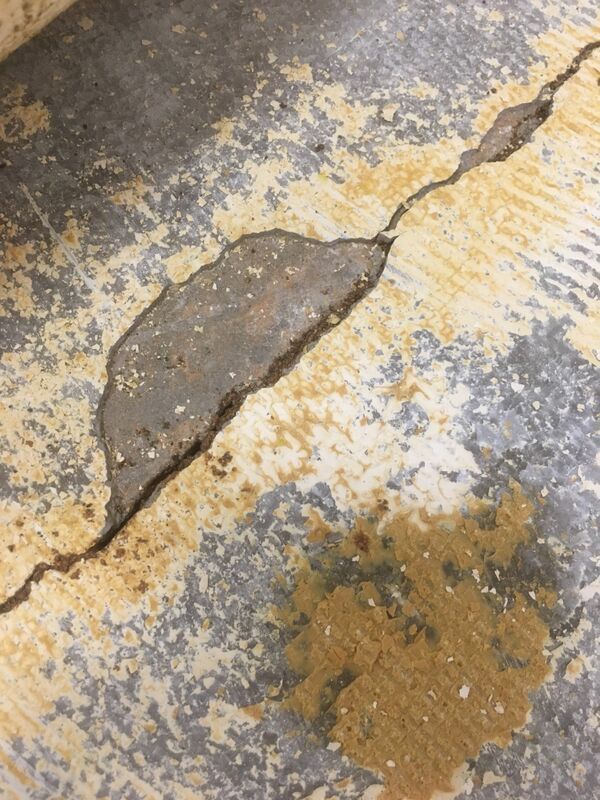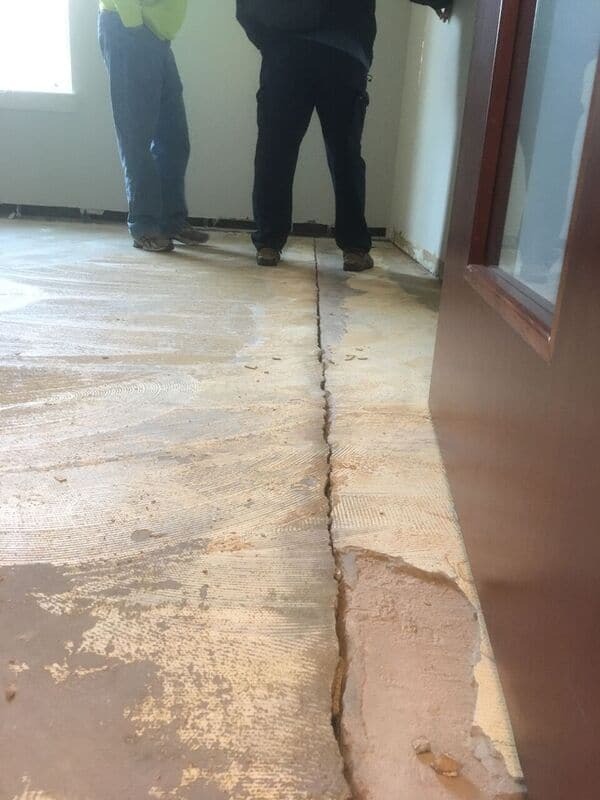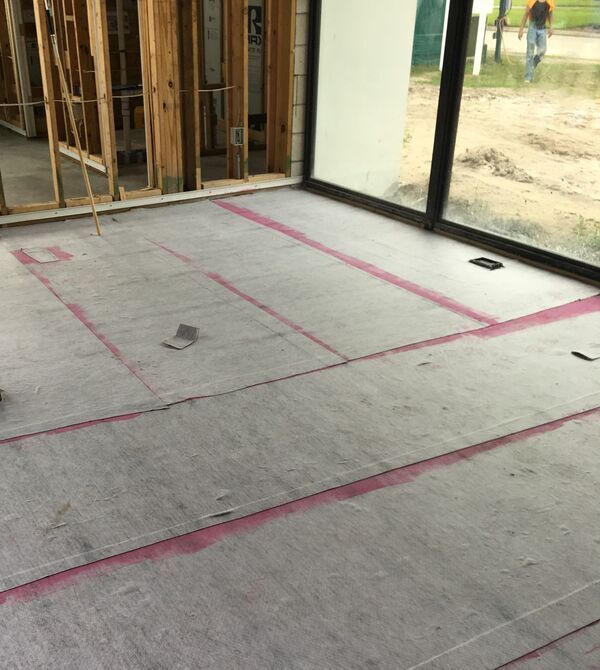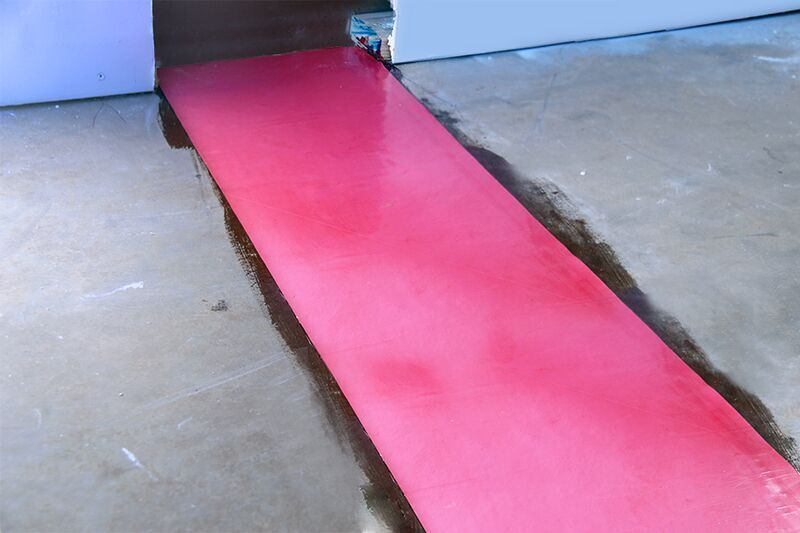
Author, Cassie Krejci, Ph.D.
Hello and welcome to another week of the TERM® Barrier System blog series! This week we will be continuing our summer blog series, Building Out Bugs, by highlighting a way you can block pests from entering the home through the slab. As part of the TERM Barrier System, Polyguard has developed TERM Flooring Underlayment membranes specifically designed for long-term exclusion.

Over time, cracks in the slab can occur due to expansive soils and settling of the structure. These cracks can be minor at first, but eventually lead to major issues. One issue is pest intrusion. If you remember from last week’s blog, termites only need 1/55th of an inch to get through the slab and into the structure.

Good engineering minimizes the movement of these structures over time, but one cannot eliminate the minuscule openings that occur over time. By including an elastomeric barrier above slab, you can maintain protection in the event that cracks do occur.

TERM Flooring Underlayment Barriers are unique in that they provide moisture vapor protection and pest exclusion above-slab. I put emphasis on above-slab because there are two advantages to the placement of this barrier:
- With above-slab installation, you will know the product is there. This seems like a simple point, but if the product is intended for below-slab installation and the concrete is poured without it, there is not much that can be done. With above-slab installation, TERM Flooring Underlayment Barriers do not interfere with the concrete process and there is more flexibility when scheduling installation.
- When TERM Flooring Underlayment Barriers are installed above-slab, you are able to see that it was done correctly. Again, this may seem like a simple point, but many below-slab products can shift and become less effective when the concrete slab is poured. After installation of the TERM Flooring Underlayment Barriers, you can walk around the structure and do a thorough inspection before moving on, which provides peace of mind that the product will perform as intended.
There are four separate TERM Flooring Underlayment Barrier products that I will write about today. Each of these are elastomeric, fully-adhered membranes that are installed once the structure is dried-in. If you refer back to the blog about TERM Sill Plate Barriers, you will remember that we left a 1 inch overhang of the TERM Sill Plate Barrier on the interior of the structure. During the installation of the TERM Flooring Underlayment Barriers, you will tie in the membranes by overlapping and sealing the products together. This creates a complete horizontal barrier to vapor and pests above the slab. What a great concept, right?
The following barriers have been designed by Polyguard’s TERM Barrier System for use under tile and wood flooring materials:
- TERM® Wood Floor Underlayment Barrier for concrete substrates is a composite membrane of polyethylene backing and TERM® Sealant Barrier, 40 mils in thickness with a ½” extended edge to provide a complete overlap seal at the edge. This elastomeric, self-adhesive barrier is wound on cores with a disposable silicone coated release sheet which is removed immediately prior to application.

- TERM® Wood Floor Underlayment Barrier for wood substrates is a composite membrane of polyethylene backing and TERM® Sealant Barrier, 40 mils in thickness with a ½” extended edge to provide a complete overlap seal at the edge. This elastomeric barrier is a loose-laid moisture barrier.
- TERM® Tile Floor Underlayment Barrier is a composite membrane of fabric and TERM® Sealant Barrier, 60 mils in thickness. This elastomeric, self-adhesive barrier is wound on cores with a disposable silicone coated release sheet. Specified Polyguard primer is required for use. TERM® Tile Floor Underlayment Barrier fills the traditional role of anti-fracture tile underlayment, helping to prevent cracks in the subfloor from appearing in the tile surface above by absorbing stress created by the crack. Additionally, TERM Tile Underlayment Barrier has sound absorbing and insulating qualities making the floor quieter and warmer in winter.

- TERM® Flooring Underlayment Barrier for Crack Repair serves as a protective solution for cracks in the concrete slab. As cracks in the slab are discovered during the remodel process, 12” wide strips of TERM® Flooring Underlayment Barrier for Crack Repair may be installed over the crack as a barrier to subterranean termites. TERM® Flooring Underlayment Barrier for Crack Repair can be used in remodeling in strip form to prevent termites and moisture from accessing structures through cracks and non-moving joints in the slab.

It’s important to note that the TERM® Flooring Underlayment Barriers are intended for new construction, with limited use in existing construction. TERM Flooring Underlayment Barriers are a component of the pesticide-free TERM Barrier System which, when properly installed as part of the building envelope, acts as a barrier to almost all pests. Because almost all pests are excluded for the life of the structure, the need for pesticide treatment should be permanently and drastically reduced.
To inquire about TERM® Weep and Vent Barriers for your next home or building project, or for additional information on the TERM® Barrier System products, please feel free to email me at ckrejci@polyguard.com.
